by Amineddoleh & Associates LLC | Sep 29, 2023 |
By: Maria T. Cannon
Due to the Azerbaijani regime’s military aggression last week, over 100,000 Armenians have fled the Republic of Artsakh (also called Nagorno Karabakh) in just four days. Azerbaijan’s military assault followed its nine-month-long illegal blockade of the entire region. For those Armenians who have called this land home (Artsakh became part of the Kingdom of Armenia in 189 BC and has maintained a majority Armenian population since then, despite being subjected to various invading rulers), fleeing their ancestral lands is necessary for survival. The alternative is to be subjected to the whims of a petro-dictatorship that openly conveys its formal policy of anti-Armenian hatred and belief that Armenians have “no right to live in the region.”
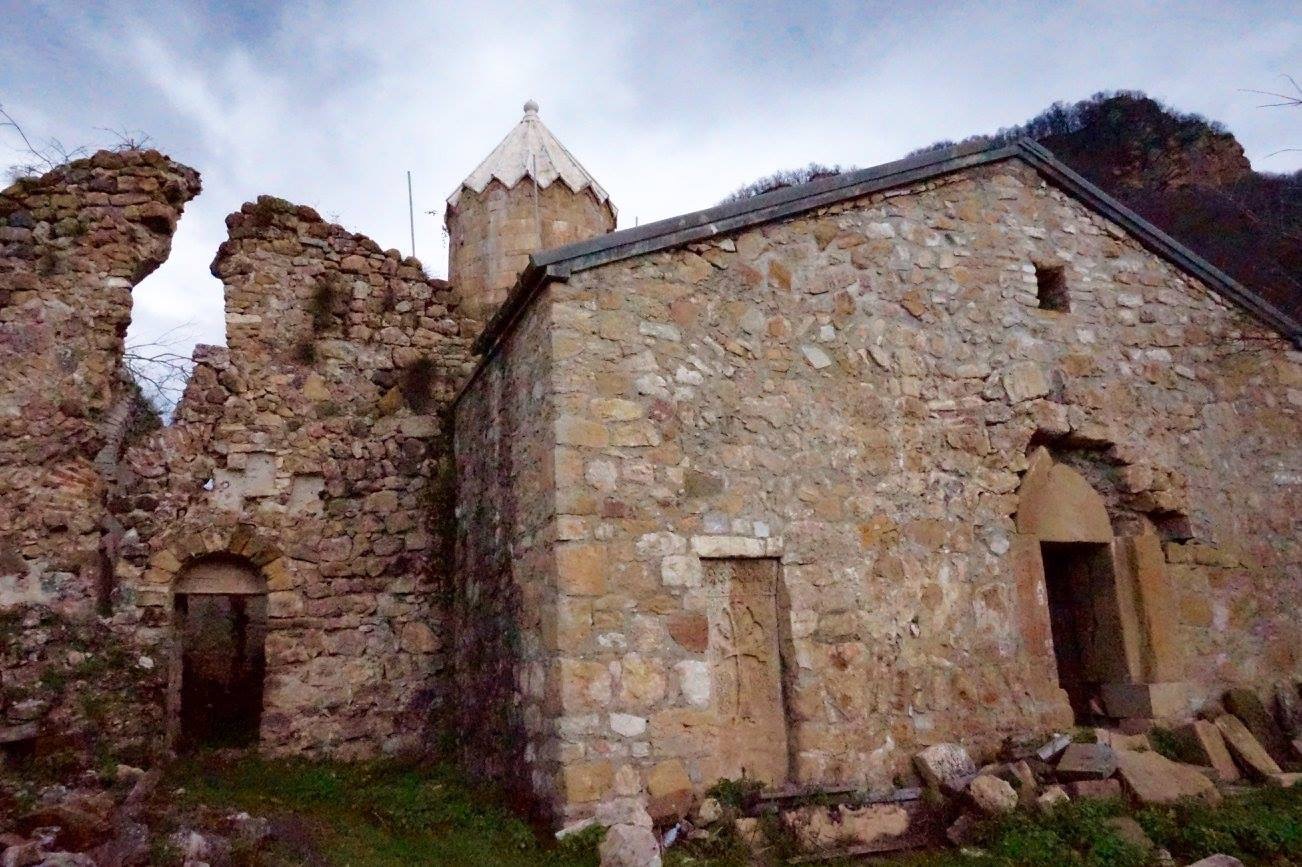
Gtichavank Monastery in Hadrut (2015). Used with permission from Yelena Ambartsumian.
Heartbreakingly, the exodus of Armenians and Azerbaijan’s occupation of the region leaves Armenian art and architecture unprotected, and we are already seeing videos of Azerbaijani soldiers shooting at and desecrating cultural heritage from Azerbaijani social media channels (international reporters are not able to access the region). Artsakh is known as the “Crown Jewel” of Armenian cultural heritage, as it contains some of the most exemplary representations of medieval Armenian architecture, as well as important sites such as the first school to teach the Armenian alphabet in the early fifth century.
War Crimes, Human Genocide & Cultural Genocide
It is a story well-known to regions in the throes of war: the searing pain of losing one’s home is compounded by the risk posed to cultural heritage left behind. In international law, war crimes, crimes against humanity, ethnic cleansing, and [human] genocide are defined separately from cultural genocide. However, all usually include acts of cultural genocide, due to the nature of the crimes committed.
Evidence of cultural genocide can be used to help prove the special intent required for the crime of genocide. This is largely because the two are so closely connected. In fact, modern experts urge legal professionals to understand that cultural genocide is “as old as [human] genocide itself” and may (in fact) be virtually inseparable from human genocide.
In light of the current situation in Armenia, and past actions by Azerbaijani forces in Artsakh— coupled with Azerbaijan’s complete eradication of over 100 medieval monasteries and thousands of cross-stones in its exclave of Nakhichevan during “peacetime”—it is an almost certainty that Azerbaijan will continue to destroy Armenian cultural heritage. Moreover, because global cultural heritage organizations such as UNESCO, have failed to uphold their own organizational standards, and other entities such as the EU have refused to condition their purchases of natural gas from Azerbaijan on Azerbaijan’s respect for cultural heritage, there is an even higher likelihood that Azerbaijan will continue to act with impunity.
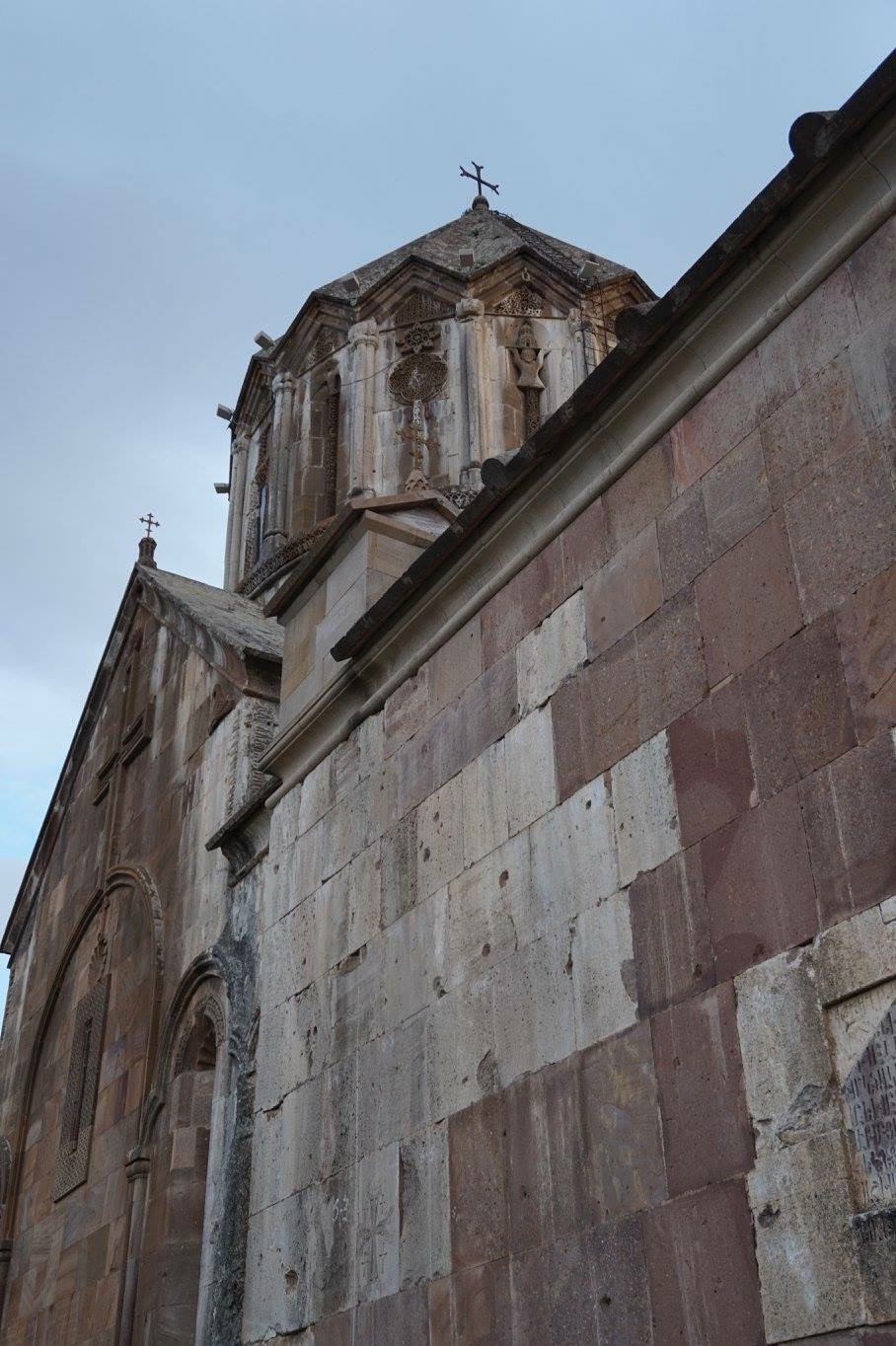
Gandzasar Monastery in Martakert (2015). Used with permission from Yelena Ambartsumian.
UNESCO’s Failure
UNESCO, known globally for championing world cultural heritage, has failed the Republic of Artsakh. On September 19, 2023, UNESCO launched a well-meaning (but utterly toothless) Armenia National Statement of Commitment Knowledge Hub and a similar Armenia National Consultation Report Knowledge Hub. The online portals come across as a futile attempt to maintain a presence in the real-life devastation currently unfolding. At this stage in the military regime’s progress, resources should be used to assist humanitarian and cultural preservation efforts on-the-ground—but Azerbaijan simply refuses to guarantee safe access to UNESCO monitors.
Both UNESCO’s current response and its lack of action in the months leading up to these (foreseeable) events are frustrating. Armenians have come to terms with UNESCO’s inability to protect their cultural heritage in this situation. The reasons UNESCO has been so ineffective are primarily two-fold: the first is the UNESCO’s Second Protocol lacks the enforcement mechanisms needed to (1) prevent cultural heritage destruction by states who are bad actors and (2) punish states that do. The disadvantages on relying on an organization such as UNESCO are compounded when the cultural heritage at issue resides in an area that UNESCO does not recognize as a “state.” The Republic of Artsakh falls under this category (meaning, UNESCO does not recognize it as a “state” of Armenia). UNESCO even failed to send a mere fact-finding mission to Artsakh, due to Azerbaijan’s objections.
The small crumb of good news is that the Armenian people took initiative and found a brilliant way to enforce global protection of their art and cultural heritage. As a law firm dedicated to protecting art and cultural heritage, we applaud the Republic of Armenia for developing this framework and precedent. We also are heartbroken that, as a nation, they were forced into developing this sort of legal path while a humanitarian crisis is currently ongoing.
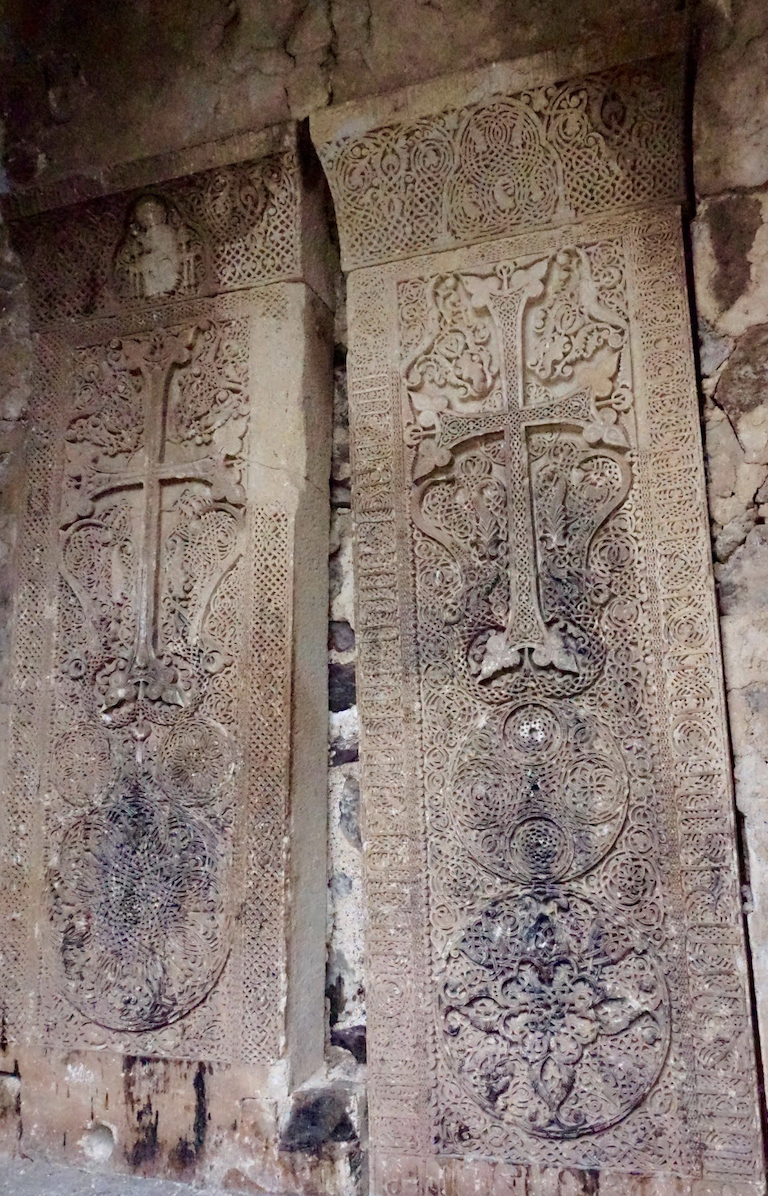
Dadivank’s khachkars (2015). Used with permission from Yelena Ambartsumian.
ICJ’s Decision and CERD
Instead of going through the UNESCO conventions, which inherently apply only to recognized states (and have therefore left out Armenian cultural heritage within the currently unrecognized Republic of Artsakh), Armenia instituted a case against Azerbaijan before the International Court of Justice (“ICJ”) under the CERD—the Convention on the Elimination of all Forms of Racial Discrimination—a United Nations treaty to which both Armenia and Azerbaijan are party.
The ICJ ruled for Armenia in its orders on provisional measures, stating that Azerbaijan must cease their state-sponsored destruction of Armenian art and cultural heritage in Artsakh.
With an ICJ order, which the U.N. Security Council is responsible for enforcing, the Republic of Armenia was able to create a new tool for safeguarding Armenian cultural heritage. Under Art. 94(2), member states are required to comply with ICJ orders. This means that Azerbaijan is clearly in violation. The U.N. Security Council has never before had to impose punishments (usually, simply the threat of involvement and diplomatic pressure from other nations are enough to stop the harm being done). However, in this case, action may not only be warranted, but is necessary to prevent Armenian culture from being erased from this region.
In an interesting update, the Republic of Armenia filed a request for indication of provisional measures against Azerbaijan, under the Armenia v. Azerbaijan proceedings before the ICJ on Sept. 29, 2023. In the filing, the Republic of Armenia specifically asked the Court to reaffirm Azerbaijan’s obligations under the Orders it rendered previously (stating, “in particular those of 7 December 2021 and 22 February 2023.“).
The importance of protecting the art and cultural heritage in Artsakh cannot be undermined. Why? Read on.
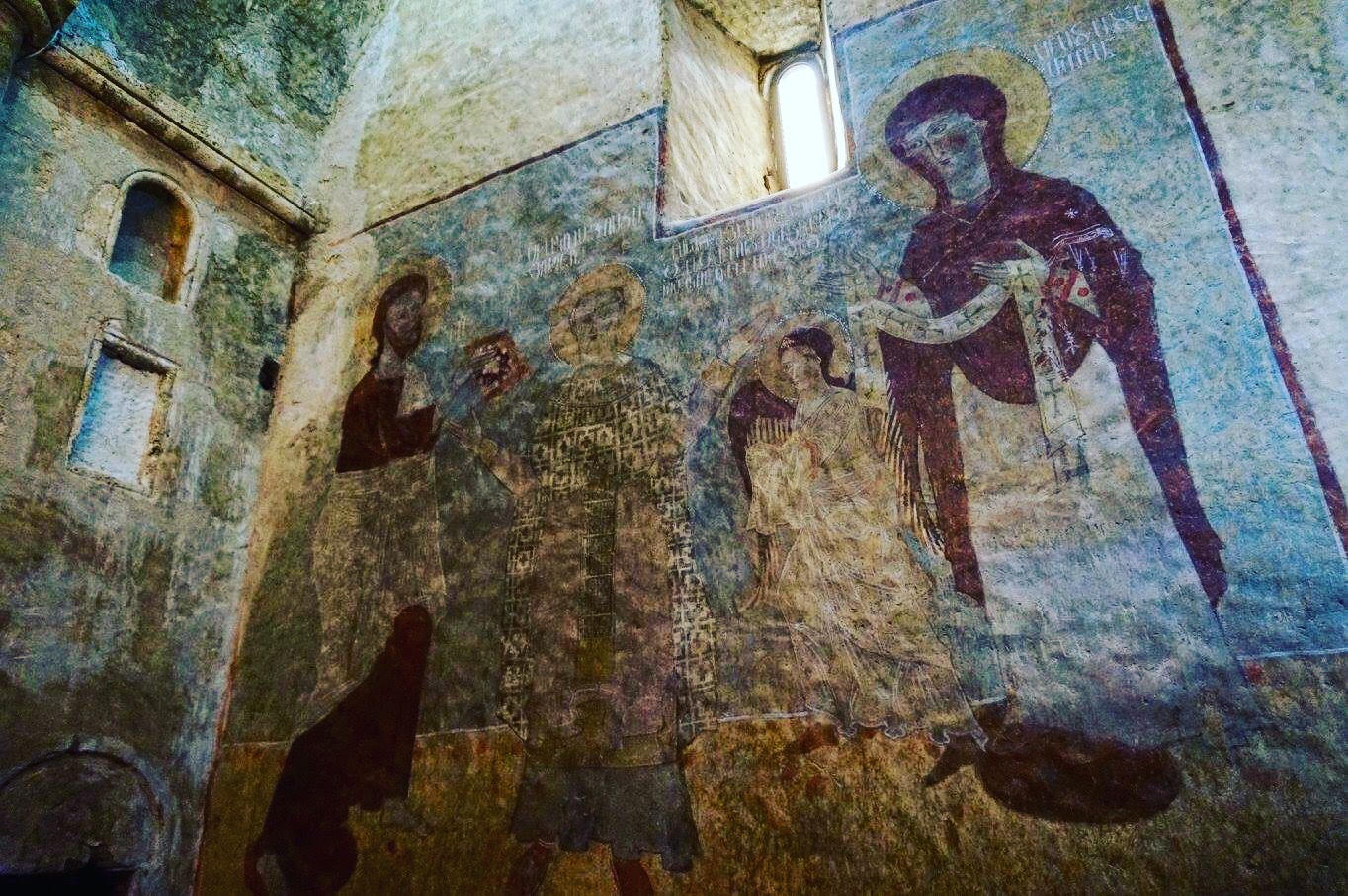
Fresco in Dadivank (2015). Used with permission from Yelena Ambartsumian.
Armenian Crown Jewels at Risk
Armenian cultural heritage has been under attack for some time. For evidence, turn to the fate of Armenian culture in the Caucasus under Azerbaijani occupation. Nearly all Armenian heritage sites in Nakhichevan were destroyed by Azerbaijan during “peacetime.” Satellite imagery by the Caucasus Heritage Watch from November 2022 confirmed that 98% of Armenian cultural sites were completely destroyed. Devastatingly, such annihilation was the result of state-sponsored, orchestrated destruction by Azerbaijani officers. To date, Azerbaijan denies destruction and instead claims that Armenian cultural heritage never existed in Nakhichevan.
Artsakh’s treasures are incredibly vulnerable in light of recent aggression by Azerbaijani forces. This is devastating to the Armenian and global artistic, religious, and historical academic communities, because Artsakh is referred to as the crown jewels of Armenian culture due to the massive number of sites from antiquity to the medieval ages, as well as cave complexes with some of the earliest evidence and remains of various hominid species in Eurasia (after crossing from Africa). In addition to having ties to Armenian nobility, the art, artifacts, and architecture in Artsakh are vital to understanding and appreciating Armenian culture. Armenians themselves reported emphasize the significance of Artsakh by saying, “after all, the crown of the ancient Kingdom of Armenia is in Nagorno-Karabakh [Artsakh].”
The entire region presents a stunning encapsulation of Armenia’s art and history. Early historical monuments and ancient fortresses reflect pre-Christian influences, while later expressions such as illuminated manuscripts, ecclesiastical murals, cross-stones, and religious structures embody the heritage of one of the world’s oldest, indigenous Christian populations. Below are two specific Armenian cultural crown jewels, currently under attack.
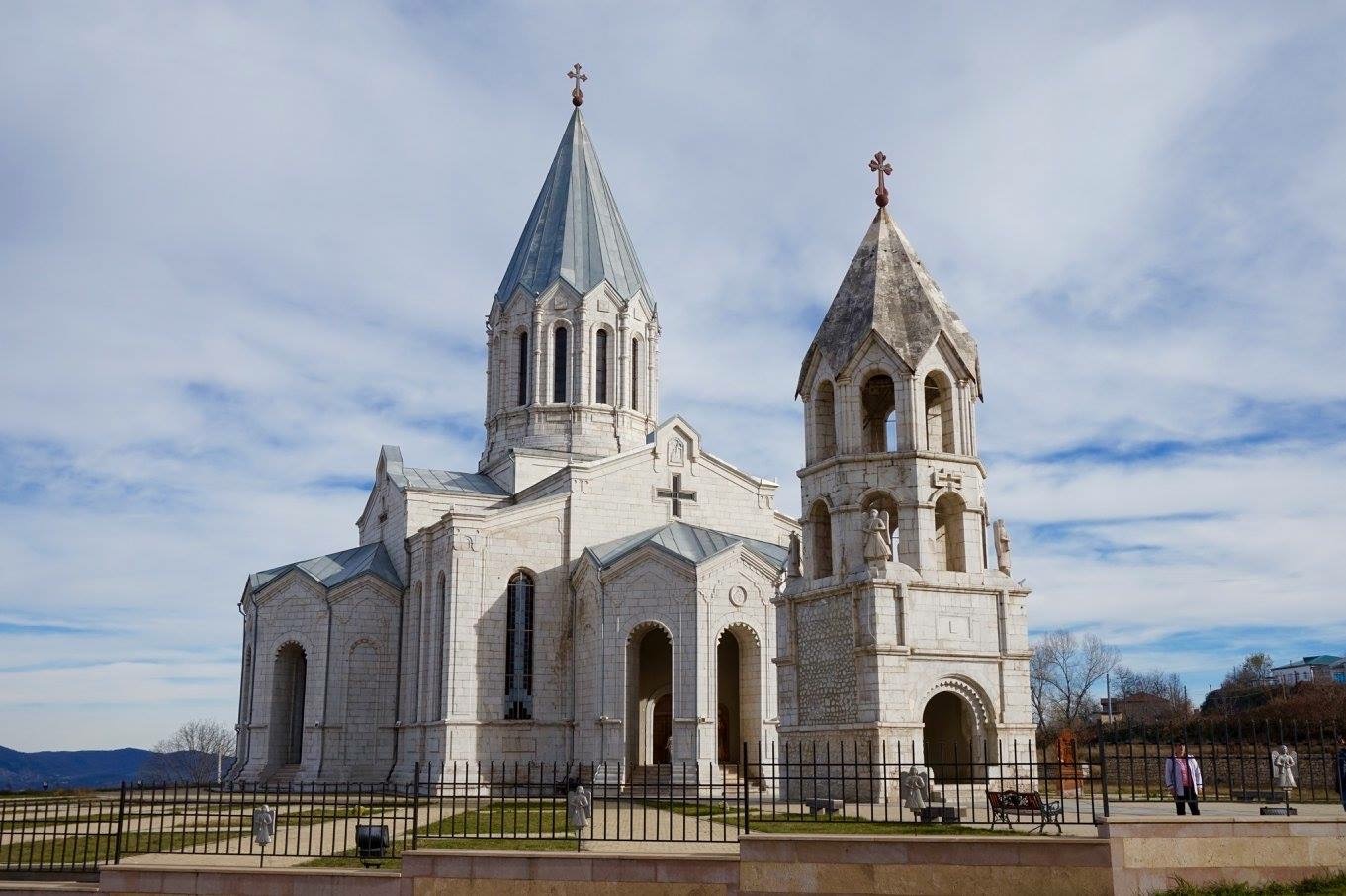
Ghazanchetsots Cathedral in Shushi (2015). Used with permission from Yelena Ambartsumian.
Shushi
The city of Shushi, in Nagorno-Karabakh, is a true Armenian cultural crown jewel. Shushi came under occupation by Azerbaijan in November 2020. Before and after gaining control of Shushi, Azerbaijan intentionally attacked its Armenian cultural heritage. In fact, in October 2020, it shelled the beautiful Ghazanchetsots Cathedral not once, but twice. There was no evidence that the shelling qualified as a military objective, particularly as civilians were hiding in the church (and the second shelling occurred when international journalists arrived to cover the destruction —one journalist was killed).
Ensuing coverage of the cathedral revealed graffiti on the walls, with Azerbaijani leaders marching through the sacred space. Precious manuscripts and relics, such as the Right Arm of Grigoris—the Catholicos of the region and grandson of St. Gregory the Illuminator who
converted Armenia to Christianity in the early 300s—are feared to be lost.
Azerbaijan then began its own “renovation” of the cathedral (deemed by the Azerbaijani Ambassador to the Holy See Ilgar Mukhtarov as a corrective effort to return the cathedral to “its original appearance [prior to Armenian cultural influence.]” This “renovation” was not done in consultation with the Armenian Apostolic Church and instead involved “beheading” the cathedral by removing its pointed dome—a hallmark of Armenian church architecture. Azerbaijan also destroyed another church in Shushi—the “Kanach Zham” (Green Chapel) Armenian Church of St. John the Baptist—by removing its pointed cupola.
The devastation is reminiscent of proto-Azerbaijani armed forces’ destruction of Shushi in 1920, which were supported by the Ottoman Army, as it marched eastward to try to take control of the region amidst the Armenian Genocide. At that time, the Ghazanchetsots was also targeted and vandalized, in addition to other significant Armenian cultural heritage sites. Half of Shushi was revealed to be destroyed, as the unrecognized Azerbaijan Democratic Republic carried out a “cultural de-Armenianization” of Nagorno-Karabakh. Current reports and photos of the region now under occupation prove that the cultural jewels of the city are – once again – suffering intentional destruction at the hands of Azerbaijani military forces.
Dadivank
Dadivank is another important cultural jewel that has fallen under Azerbaijani occupation. This is an unprecedented loss, as the Dadivank region is a spiritual center for Armenian Christians. Dadivank contains an important religious complex, known as the Dadivank Monastery, which houses the relics of St. Dadi, a disciple of Thaddeaus the Apostle, in addition to other sacred artifacts and objects. Because the land is now under Azerbaijani control, irreplaceable symbols of Armenian spiritual and religious heritage are in danger.
The monastery itself encompasses a series of more than thirty buildings on its territory. This includes several churches, chapels, monasteries, libraries, and living quarters, as well as the Hasan-Jalal Palace (and even a printing press!). Cultural highlights include works such as the frescos on the walls of the Church of the Holy Virgin (built in 1214 by Princess Arzu-Khatan, and the porch-chapel of St. Grigor (built in 1224 as the burial vault of princes).
Another priceless piece of Armenian cultural heritage is located on these grounds: khachkars, or cross-stones (stone slabs with engraved crosses). These are irreplaceable components of the Armenians’ cultural legacy, because they are exclusive to Armenian religious art (and have been for centuries). Many of the khachkars located in the St. Dadi Church, for example, date back to the 12th and 13th centuries. Unfortunately, because these works are so closely tied to Armenian Apostolic Church identity, khachkars and other works of ecclesiastical art and architecture are prime targets for Azerbaijani destruction.
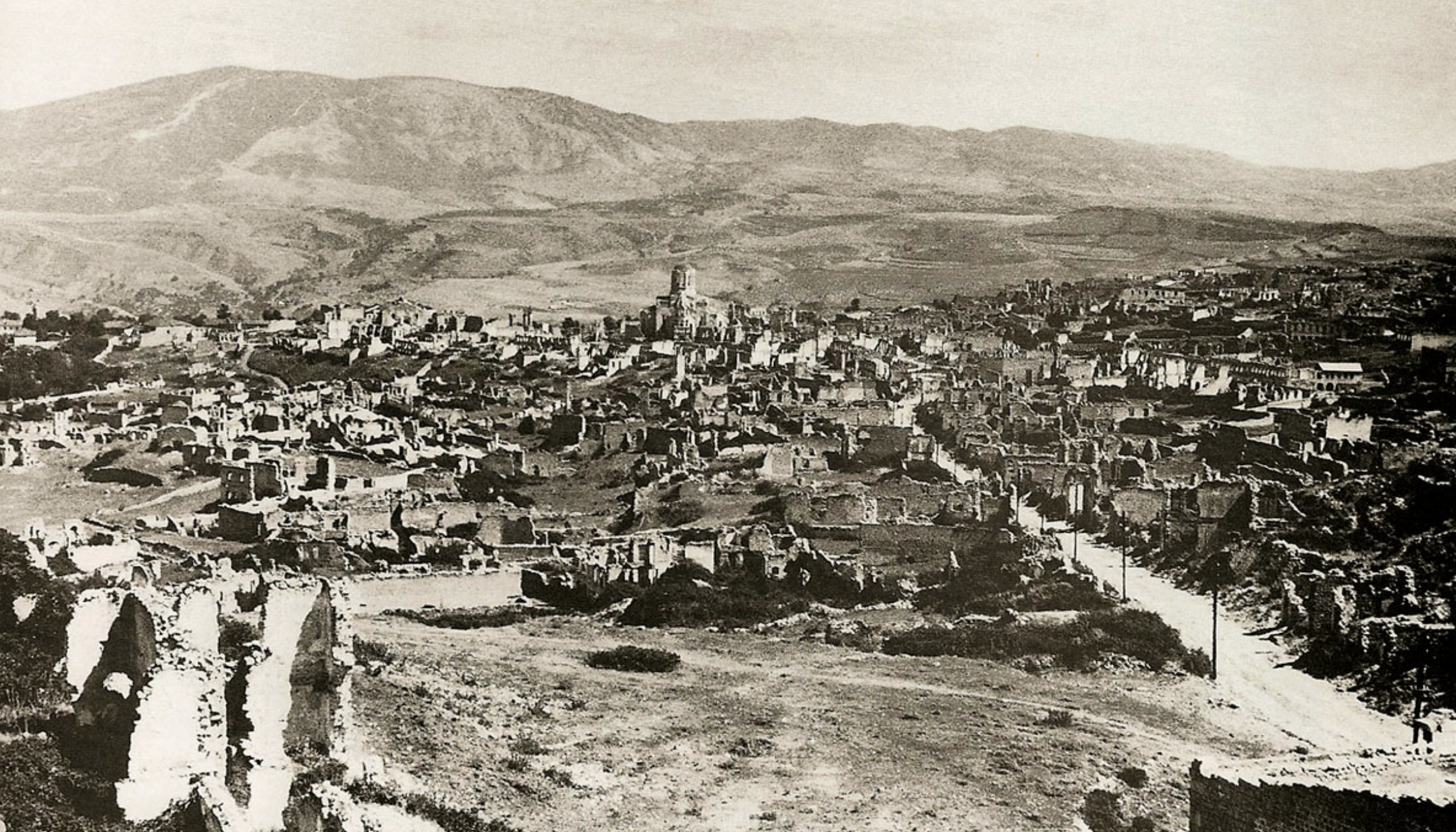
Ruins of Shushi after the city’s destruction by Azerbaijani army in March 1920. In the center: defaced Armenian Ghazanchetsots Cathedral. Image via State Archives of Armenia (public domain).
Global Response
Armenians who have been able to flee recount the bombing, fear and death they have left behind. Their first-person accounts give us a clearer insight as to what is truly going on in Artsakh – both to ethnic Armenians and to their cultural and artistic treasures. Reports of attacks done with “no apparent regard for the lives or basic human rights of the population of Nagorno-Karabakh” explain the seriousness of the situation.
Armenian art and architecture carry incredible significance – not just in Armenian culture, but as a vital piece of our shared global human narrative. The works being destroyed are testaments to their artistic mediums – gorgeously decorated and elaborately intricate. More importantly, they are symbols of the history of Armenia as a liberated people.
Many of these cultural heritage sites have served as pilgrimage destinations for Armenians for centuries. Even apart from the significance to Armenian culture, the sacred works and spaces are a testament to pre-Christian medieval influences, early Christian artistic works, and the 19th and 20th century religious-cultural renaissance of the region.
All can do their part in raising awareness of the on-going crisis in Armenia. In addition to continuing to pressure government officials to take action, make a donation through a trusted relief organization.
Donate to the Armenian Red Cross here.
by Amineddoleh & Associates LLC | Aug 10, 2022 |

Museum dell’Arte Salvata (Copyright: Leila A. Amineddoleh)
Amineddoleh & Associates LLC is proud to work as a leading law firm in the cultural heritage sector. We have worked with collectors, dealers, museums, law enforcement agencies, and even foreign governments. One of our clients is the Republic of Italy, a nation paradoxically blessed with an abundance of artistic and cultural treasures, but cursed with the solemn responsibility of protecting those treasures. Properly monitoring antiquities and archaeological sites, regulating the market, and protecting cultural heritage is a costly and heavy burden. Every region of the Italian nation is famed worldwide for its cultural treasures, and so the country has developed means to actively protect its heritage through various channels. For instance, Italy is the first nation in the world to have a military unit responsible for the protection of art and heritage.
The Carabinieri Headquarters for the Protection of Cultural Heritage (Comando Carabinieri Tutela Patrimonio Culturale, or TPC) was instituted in 1969. The TPC is a part of the Ministry of Culture and plays an important role regarding the safety and protection of the heritage. The TPC is renowned for its efforts and works with law enforcement agencies around the world to recover stolen and illicitly exported artifacts, assists in heritage protection and management globally, recovers stolen art within Italy and abroad, and works to monitor and regulate the art market for looted or illicitly removed art and antiquities.
The TPC has had tremendous success over the decades, recovering hundreds of thousands of objects worth billions of dollars. In a thrilling recent escapade during 2020, the TPC tracked down a 500-year-old painting stolen from a museum in Naples. Jesus Christ in his “Savior of the World” (Salvator Mundi) aspect. The work is a copy of the infamous Salvator Mundi that sold for over $450 million in 2017 (considered the world’s highest-selling painting to date). The police found this copy stashed in the cupboard of an apartment and arrested the 36-year-old property owner. It was probably easy to spot among the inhabitant’s mismatched cutlery.
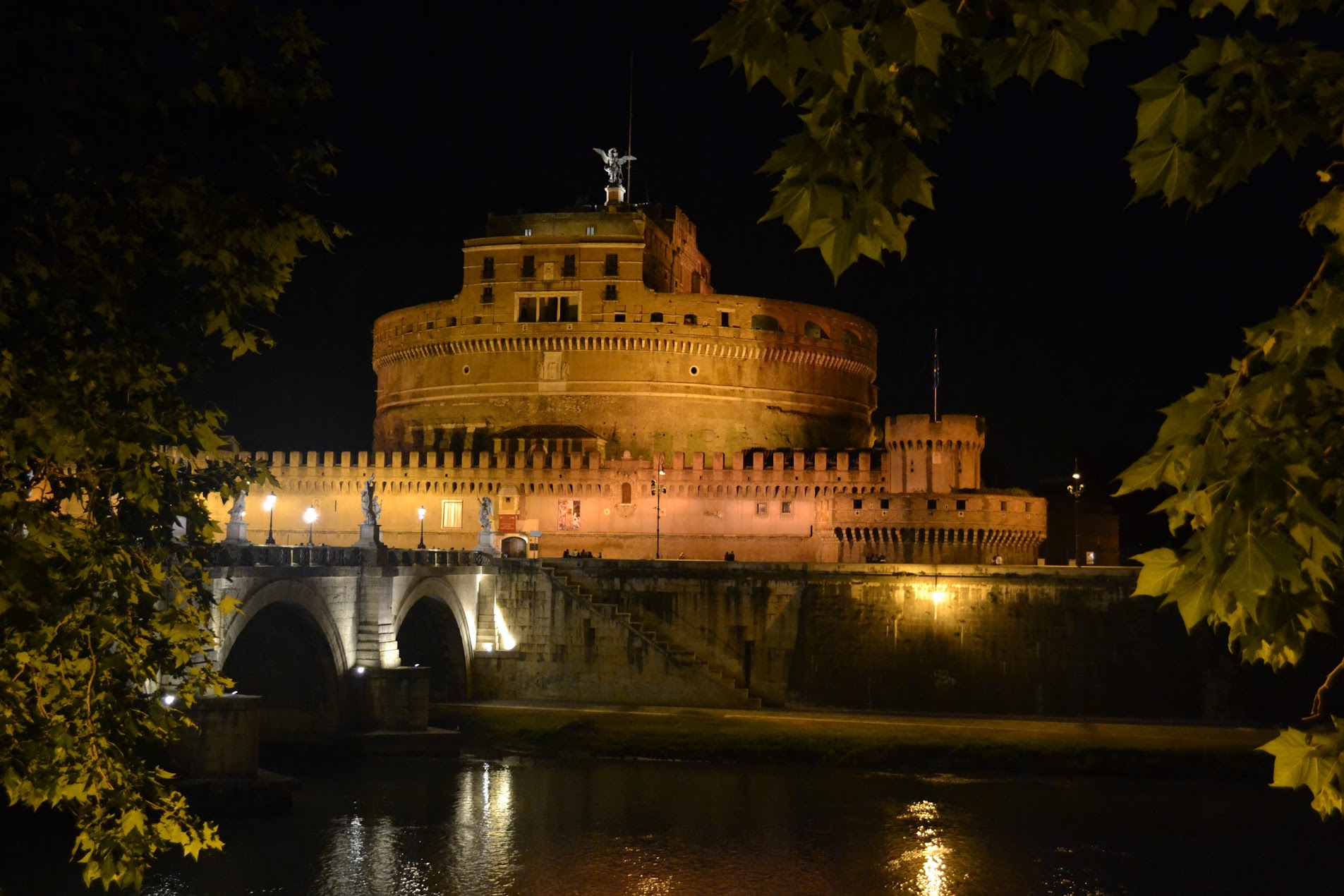
Castel Sant’Angelo (Copyright: Leila A. Amineddoleh)
The elite and highly specialized force has celebrated its successes in countless repatriation ceremonies and with art exhibitions. In particular, 2009 marked one of the most high-profile returns resulting from TPC investigations. The Metropolitan Museum of Art (the “Met”) returned the Euphronios Krater (infamously known as the “Hot Pot”) to Italy once the TPC and Swiss authorities uncovered an extensive looting network selling black market antiquities from Italy. These objects wound up in the hands of reputable collectors and museums, including the Met, the Museum of Fine Arts in Boston, the Getty Museum, Harvard University, and the Cleveland Museum of Art. In the wake of this return, hundreds of other items from that network were returned. These restituted works were exhibited in the Colosseum with much pomp, circumstance, and celebration.
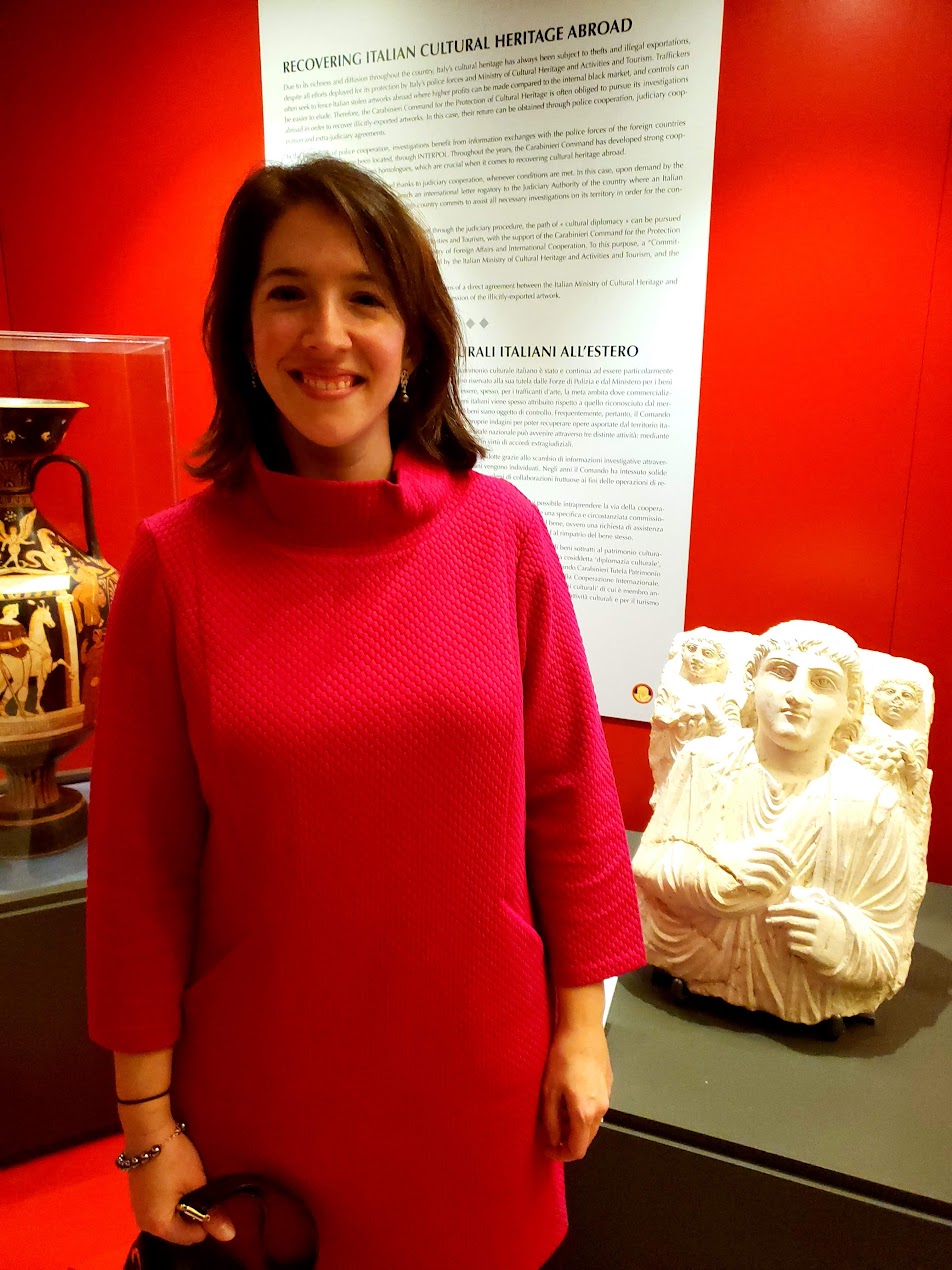
At the United Nations in January 2020
A decade later, in 2019, in honor of the TPC’s 50 anniversary, the Carabinieri, the Italian Ministry of Foreign Affairs and International Cooperation, and the Italian Ministry of Cultural Heritage and Activities organized a comprehensive exhibition of recovered art. “Recovered Treasures: the Art of Saving Art” was on view in Paris and then displayed at the United Nations in New York in January 2020. Our founder, Leila Amineddoleh, was invited to attend this exclusive event to open this once-in-a-lifetime exhibition. At the opening, Secretary-General of the United Nations Antonio Guterres aptly stated that the “exhibition not only comprises priceless works of art, it also paints a picture of the power of international cooperation.”
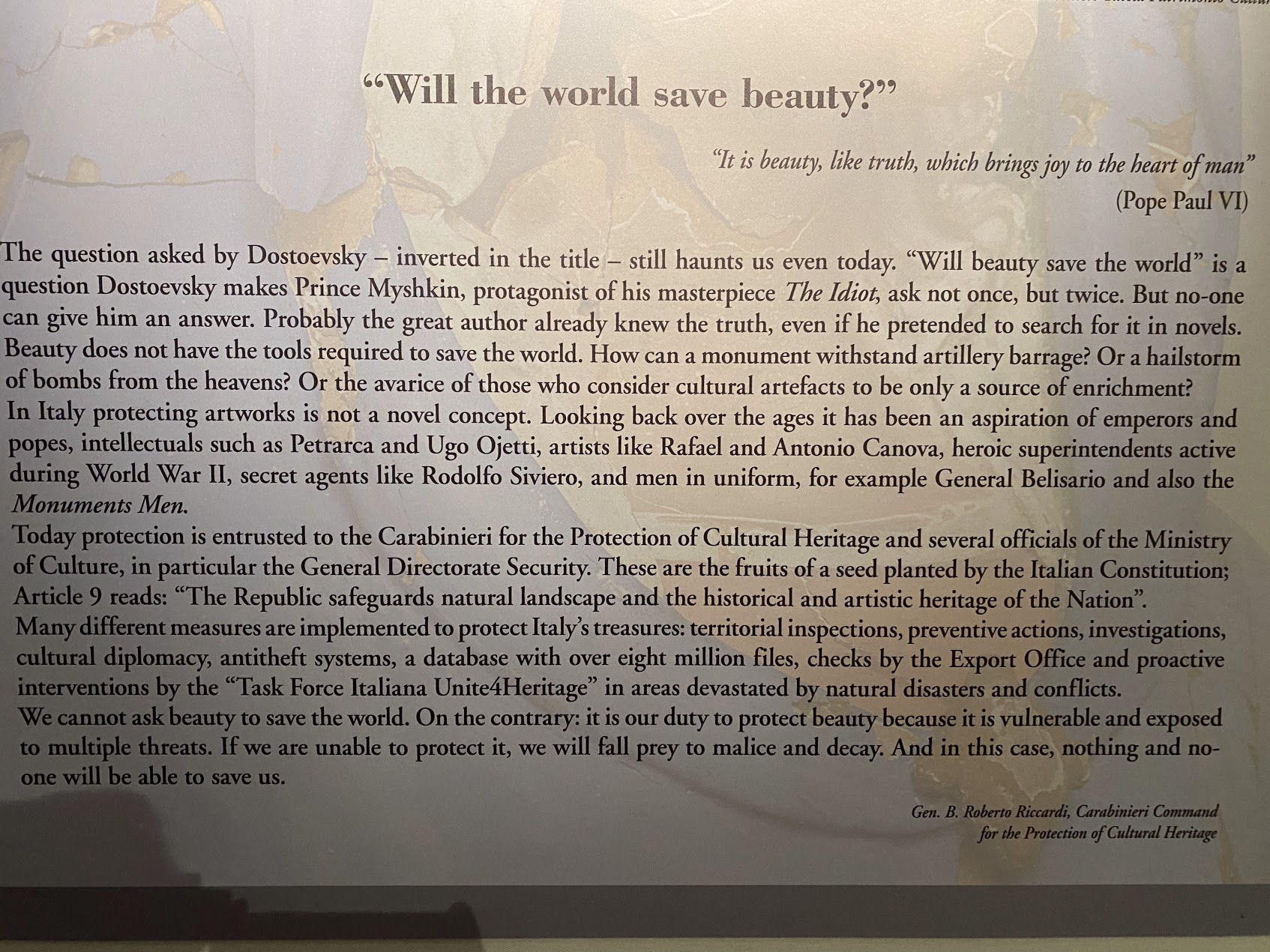
Sign at the entry of “Will the world save beauty?” exhibition
When Italian museums finally reopened after the Covid pandemic, the Castel Sant’Angelo in Rome hosted an exhibition entitled “Will the World Save Beauty?,” a show dedicated to exhibited repatriated antiquities, items recovered after natural disasters, works stolen from churches and private institutions, the prevalence of forgeries, and even stolen instruments. Leila also received an invitation from the Carabinieri to view this jaw-dropping show. The juxtaposition of recovered antiquities in a building with nearly 2,000 years of history was both ethereal and moving. This historic site had survived sacking and plundering, and so it was particularly effective to experience repatriated artwork in such a historically rich setting.

Copyright: Leila A. Amineddoleh
At the start of this summer, Minister of Culture Dario Franceschini announced the opening of the Museo dell’Arte Salvata (“Museum for Rescued Art”), a new museum displaying looted works returned to the Mediterranean nation. The concept for this museum is innovative and appealing – hundreds of smuggled, and now repatriated, artworks will be displayed for public view. But the particular items on display will rotate, with the next group of pieces to be presented after October 15, 2022. Once the displayed works are removed, they will be returned to the respective regions of Italy from where they were originally stolen. The museum’s noble aim is to return objects to the collections of small museums that have suffered from the loss of artwork, giving them and the nation of Italy as a whole a boost to aid in post-pandemic recovery for the culture sector.
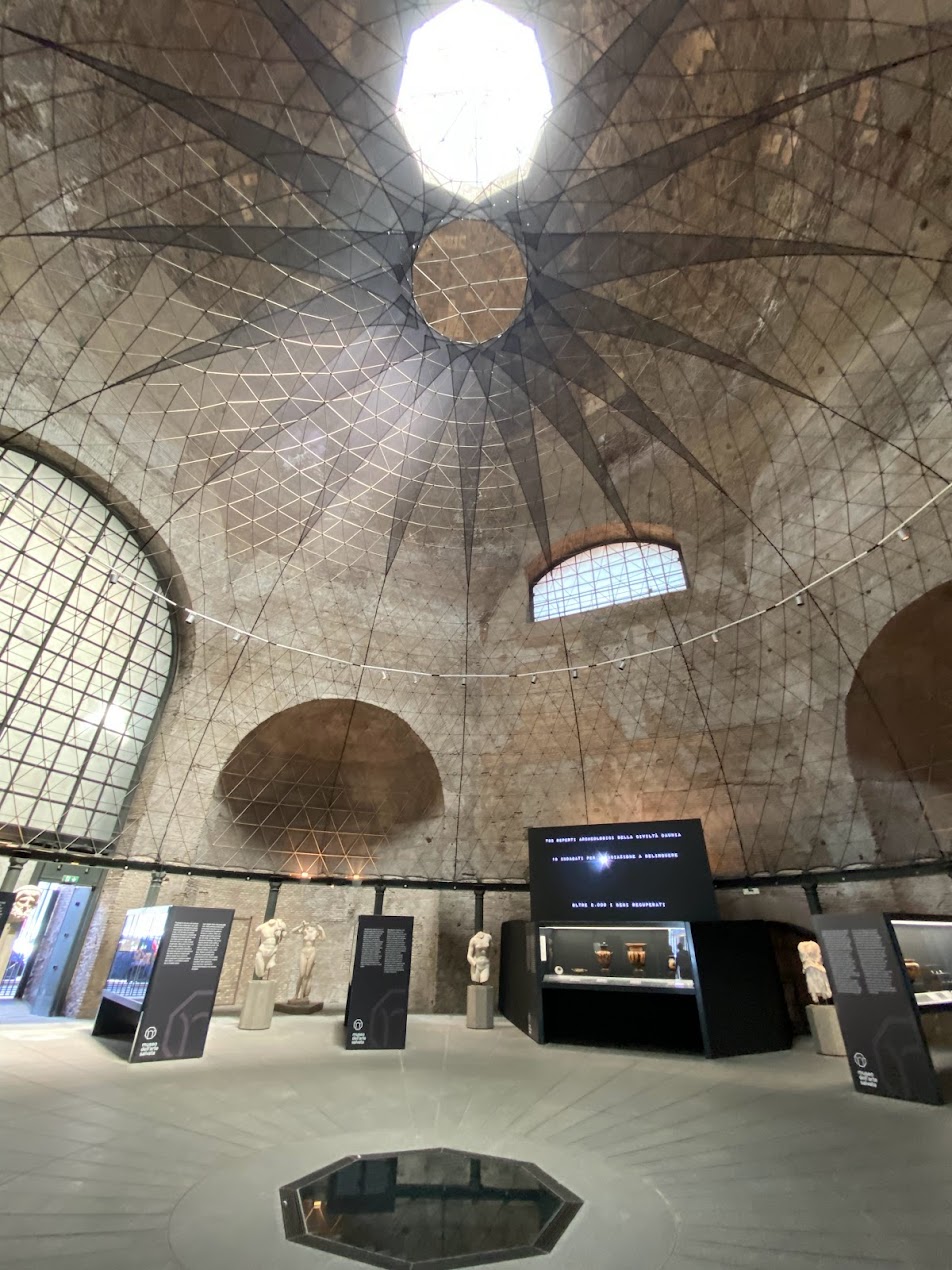
Copyright: Leila A. Amineddoleh
Our founder had the pleasure of visiting the museum shortly after its fabulous opening. The museum is intimate (the objects are all displayed in one large room), and the exhibition is excellent. The repatriated objects on display are organized in glass vitrines featuring information about the works’ significance, the ways in which they were smuggled, and the importance of repatriation. The museum notes that the objects on display are “mainly from the United States of America.” The United States (in particular, New York) is the center of the art market and so items are sold both legally on the market and illicitly. But US authorities have also been instrumental in recovering stolen and illicitly exported objects linked to Italy.
Franceschini stated: “Stolen works of art and archaeological relics that are dispersed, sold or exported illegally is a significant loss for the cultural heritage of the country…. Protecting and promoting these treasures is an institutional duty, but also a moral commitment: it is necessary to take on this responsibility for future generations.” Stéphane Verger, director of the National Roman Museum, poignantly noted: “I think of this as a museum of wounded art, because the works exhibited here have been deprived of their contexts of discovery and belonging.”
Just a month after this exhibition’s opening, another 142 Italian antiquities seized by the Manhattan DA are headed home to Italy. This included 48 items recovered from private collector Michael Steinhardt during a high-profile seizure in December 2021, where the former hedge fund manager agreed to surrender $70 million worth of antiquities. The most valuable work returned to Italy is a fresco depicting an infant Hercules strangling a snake, valued at $1 million and looted from Herculaneum. Officials revealed that another 60 of the items were recovered from Royal-Athena Galleries in Manhattan.
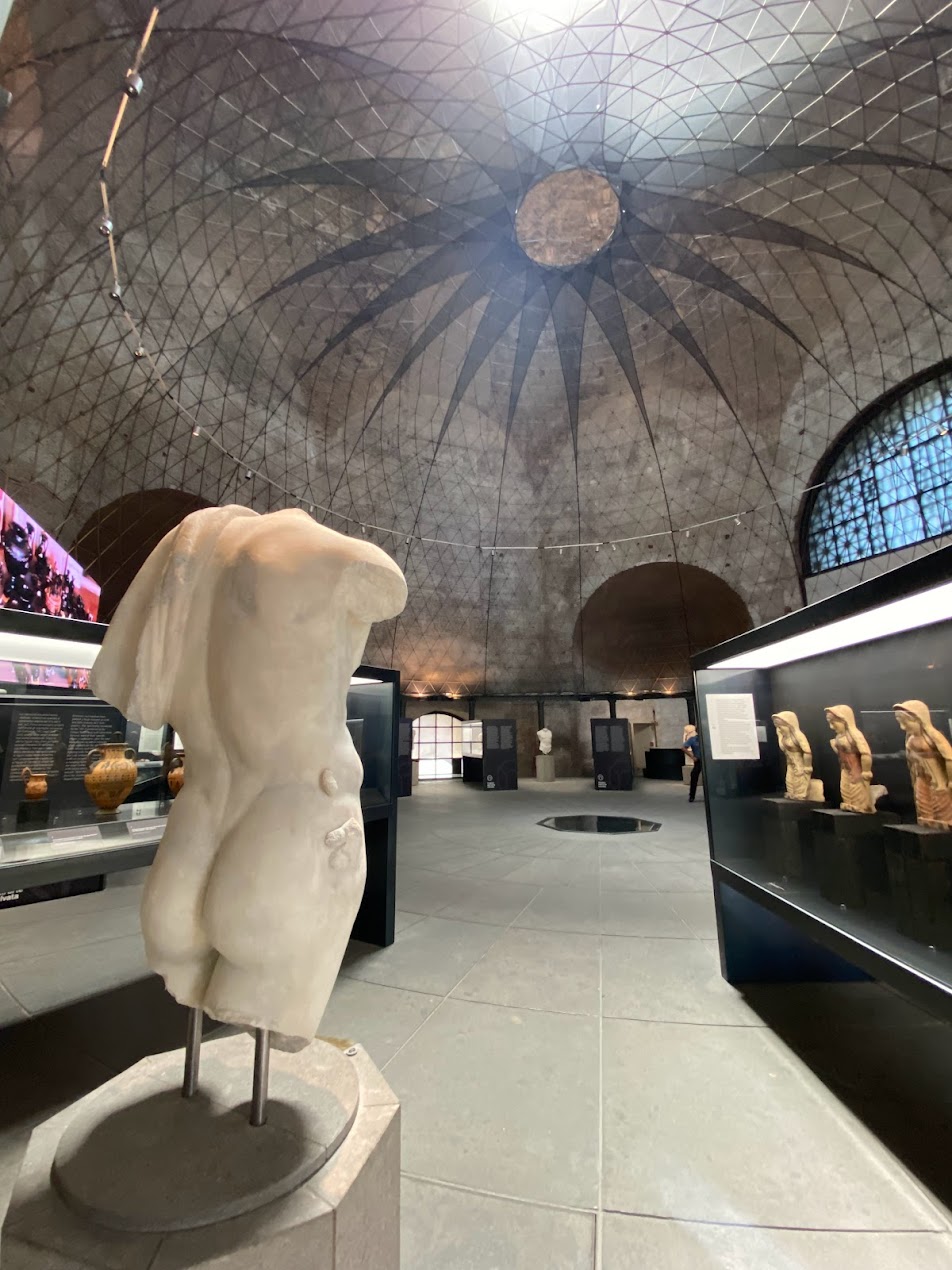
Copyright: Leila A. Amineddoleh
As this law firm is currently representing the Republic of Italy in an ongoing antiquities dispute, and our founder served as a cultural heritage law expert for the Manhattan District Attorney’s Office regarding the seizure of items from Michael Steinhardt, traveling to Rome and visiting such an impressive and important exhibition was – in Ms. Amineddoleh’s word – both powerful and gratifying. This highlights the impact of cultural heritage looting and trafficking at the global level and close to home.
The Museo dell’Arte Salvata is located in the Aula Ottagona, a building that had previously been closed for a number of years. The structure is part of the Baths of Diocletian complex, located a few minutes away from Termini Train Station (Rome’s main railway station), and across the street from the Repubblica subway station, in the heart of the Eternal City. Since it is part of the network of national Roman museums, visitors can purchase one ticket and see all five museums for one relatively inexpensive entry price. It is well worth the trip – and visitors can wrap up their visit with a large bowl of cacio e pepe and a hearty glass of Chianti Classico for a true Italian experience.
by Amineddoleh & Associates LLC | Dec 6, 2021 |
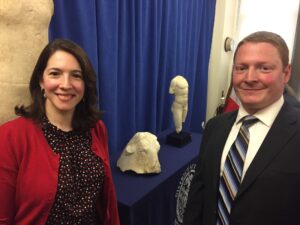
Our founder at the repatriation ceremony for the Bull’s Head in 2017
Today, the Manhattan District Attorney (DA) Cyrus Vance announced that Michael Steinhardt, hedge-fund pioneer and one of the world’s most prolific collectors of ancient art, surrendered 180 looted antiquities valued at $70 million. This unprecedented seizure is the result of a criminal investigation that began several years ago. Amineddoleh & Associates previously wrote about a looted Bull’s Head had been purchased by Steinhardt in 2010 for $700,000, who subsequently loaned it to the Metropolitan Museum of Art. After museum personnel raised concerns as to the provenance of the object, it came to light that the sculpture had been looted during the Lebanese Civil War. The Bull’s Head, as well as an ancient marble torso depicting a calf bearer, were both tied to the black market, seized by the DA’s Office, and subsequently repatriated. Both items had been extensively photographed during their excavation in 1967, and storage records placed them at a Lebanese warehouse before they were stolen in 1981. Notably, there was “not a single piece of paper” accounting for the provenance of the Bull’s Head between its disappearance and later sale at a London dealership in the 1990s.
Despite the presence of multiple red flags during the acquisition process, Steinhardt failed to prioritize due diligence when purchasing these objects. Most of the antiquities in his collection were trafficked during periods following civil unrest or armed conflict and depicted covered in dirt or other encrustations in photographs prior to their purchase. The seized objects span 11 countries and 12 criminal smuggling networks, and all had deficient provenance histories – or more troublingly, no information at all as to their origins – at the time of sale. It is incredulous that Steinhardt was unaware of his illegal acts. “For decades, Michael Steinhardt displayed a rapacious appetite for plundered artifacts without concern for the legality of his actions, the legitimacy of the pieces he bought and sold, or the grievous cultural damage he wrought across the globe,” said District Attorney Vance. “His pursuit of ‘new’ additions to showcase and sell knew no geographic or moral boundaries, as reflected in the sprawling underworld of antiquities traffickers, crime bosses, money launderers, and tomb raiders he relied upon to expand his collection.”
In a major announcement, the DA’s Office reached an agreement to put an end to the legal process filed against Steinhardt, whereby all the antiquities formerly in his possession will be returned to their countries of origin rather than being held as evidence in a lengthy criminal procedure. Vance also indicated that his office is currently carrying out joint parallel investigations with foreign law enforcement, and this measure will protect the integrity of the process and potential witnesses. Most importantly, Steinhardt was given a lifetime ban on the purchase of antiquities, the first time such an extreme sanction has been imposed. This indicates the seriousness with which the DA’s Office views the illicit trafficking of antiquities and other cultural heritage objects and heralds more stringent oversight for private players in the New York art market.
The Steinhardt seizure represents a significant achievement for the Manhattan DA’s Antiquities Trafficking Unit (led by Matthew Bogdanos), which has recovered thousands of stolen cultural heritage objects collectively valued at over $200 million since its inception in 2017, and repatriated a total of 717 pieces to 14 nations over the past year.
Amineddoleh & Associates LLC has been watching this matter closely. Our founder, Leila A. Amineddoleh served as the cultural heritage law expert for a number of the warrants used to seize dozens of items from Steinhardt’s collection, including the Lebanese Bull’s Head. (We note that Leila has never been, and is not currently, employed by the Manhattan DA’s Office, but has instead served as an independent expert.)
by Amineddoleh & Associates LLC | Jul 28, 2021 |
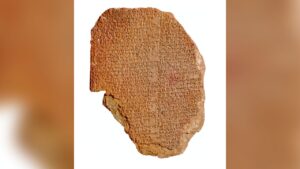
“Gilgamesh Dream Tablet” (Photo courtesy of US Department of Justice)
The epic saga of Gilgamesh continues as Hobby Lobby is once again caught in the crossfire of illicit antiquities trafficking. Yesterday, federal authorities forfeited a 3,500 year old clay cuneiform tablet known as the “Gilgamesh Dream Tablet” from the crafting giant. The tablet contains a portion of the “Epic of Gilgamesh” where the protagonist describes his dreams to his mother. It is considered a rare and ancient masterpiece of world literature.
The federal government had originally seized the tablet in 2019 and filed a civil forfeiture action in May 2020 to return it to Iraq. The tablet’s provenance was falsified to assert that it had been discovered in a box purchased at a California auction in 1981. In reality, the item had been purchased by an American dealer in London in 2003, who then brought it to the US. This timing coincided with widespread looting of archaeological sites in Iraq as a result of the ongoing war with the US. Hobby Lobby purchased the tablet for $1.6 million at a Christie’s auction in 2014, relying on the auction house to perform the appropriate due diligence. It transpired that the previous owner had warned Christie’s that the tablet’s stated provenance would not withstand scrutiny. The auction house failed to notify Hobby Lobby of this fact even after the craft company had expressed concerns. Ultimately, Hobby Lobby cooperated with the authorities and consented to the tablet’s forfeiture.
However, this is not Hobby Lobby’s first brush with the law over looted Middle Eastern antiquities. In 2010, representatives of Hobby Lobby purchased thousands of antiquities originating from Iraq for display at the future Museum of the Bible. The provenance information for the objects was fabricated, listing their origin as Israel or Turkey to avoid suspicions of illicit trafficking. Notably, Hobby Lobby consulted a respected cultural heritage expert regarding its acquisition, but went against her advice and continued with the transaction, ignoring several red flags indicating that the items had been looted. In 2017, a civil forfeiture action was filed and Hobby Lobby agreed to pay a $3.3 million fine and return over 5,500 looted objects to Iraq.
In this instance, our founder Leila Amineddoleh served as a cultural heritage law expert for the Eastern District of New York. She was extensively quoted on her participation in the matter in national media and trade outlets. She noted how the verdict resulted in greater public scrutiny over the purchase of antiquities and a higher expectation of due diligence measures related to provenance, even for so-called “inexperienced” purchasers. (Information about the matter can be found in our prior blog posts here and here.) This approach has indeed borne fruit, as the forfeiture of the Gilgamesh Dream Tablet demonstrates.
Law enforcement authorities in the US have been actively pursuing black market antiquities and disrupting trafficking networks for some time, but judicial enforcement and specialist support are also crucial. Many countries that suffer from cultural property looting and trafficking, including Iraq, have applicable provenance laws that cover items like the tablet. Furthermore, the US has placed import restrictions on Iraqi cultural property since 1990 and implemented sanctions as recently as 2010, allowing the government to seize objects at or after import. Judicial precedent has empowered US courts to recognize foreign patrimony laws and classify such objects as stolen property, increasing their protection on US soil, but government agents rely on knowledgeable attorneys and experts to advise them on cultural property protection and available legal remedies.
Amineddoleh & Associates LLC is proud to have a founder that has advised the government extensively on such matters and is a staunch advocate for responsible acquisition practices to combat the illicit antiquities trade. Our firm deals with various cases involving potentially looted items on behalf of private and public parties, and we are committed to ensuring that cultural property is protected irrespective of origin. Our strong track record in this field is a testament to our expertise and commitment to stemming the trade in looted objects. We commend the Department of Justice for its excellent work and look forward to continued collaboration in the future with law enforcement to ensure that looted antiquities return to their rightful homes.














